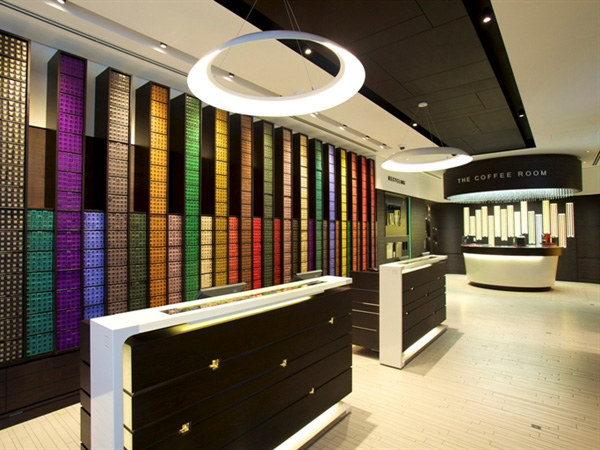The 5 Latest Neuromarketing Insights of 2016 Q1
Relevant topics Neuromarketing Fundamentals, Strategy
Do you recognize this feeling while you’re walking through the Nespresso brand store? Everything seems to be in perfect harmony. The colors, counters, even the delicious smell of coffee. Everything just ‘feels’ perfect.
Luckily we don’t have to rely on those instincts any longer. To a degree we can quantify this ‘feeling’. (Neuro-)Research shows us why we buy, and gives us measurable methods to make informed decisions. In one word: neuromarketing.
But how do you get your hands on this latest research? Let alone find the time to dig through the dusty pile of articles in search for that one gem? Fear not, we’ve done that job for you.
NewNeuroMarketing.com. The 5 most important findings of Q1 2016 neatly summarized. Findings you can use in your everyday marketing practices.
PDF bonus: This article is 1.572 words. Click to download the full PDF so you can reference it later.
1. Product placing: Yay or Nay?
With adblockers hitting an all-time high, online advertising is seeing diminishing returns. All the more reason for marketers to seek other types of exposure. Product placement – products and brands used ‘naturally’ in movies and series – is a less explored type of exposure. Of course, regulatory measures have been set to inform viewers when this happens. A lot of movies and series now show a warning in advance; notifying viewers that the following movie or series contains sponsored products.
What happens to consumers when such a warning is displayed? In notifying the viewer, he could get the chance to turn on his mental adblocker. New research shows two sides of the same coin.
Eye tracking research shows us that a ‘product placing notification’ causes products and brands to get more attention during the viewing.
But there is a flip side: when notified, viewers are actively blocking the influences of said brands. So while the brand will get more attention, brand attitude gets a slap in the face.
Smart move Vodafone?
A classic case of Persuasion Knowledge; the viewer realizes he’s about to be influenced and arms himself. However, this only happened for hedonic product and not utilitarian, everyday products like milk and sugar.
Key takeaways:
- Product placing causes more attention for the products
- Product placing has a negative effect on brand attitude
- Product placing can be beneficial, but only for commodities
- Brands that rely on positive attitudes should stay away from product placement.
2. How a spacious store will let you sell more
Do you know what your social status has to do with how much you’re willing to pay for a product? It turns out a lot, be it in an indirect fashion. The following finding shows how a more spacious store can elicit a higher perceived status. And this is indirectly good news for your turnover!
Research shows a correlation between your perceived social status and space in general. Think about it, does someone with a high status live in a big house or in a small apartment on the 8th floor?
That’s what I thought.
The higher your status, the more you can be ‘living it large’, quite literally. We associate something or someone with a lot of space indirectly with a higher status.

A very spacious Nespresso store
More space means fewer people per square meter. Conversely, a photo showing a product crammed with people in it will perceived as ‘lower status’.
People, in turn, who associate a product with higher status are willing to pay more for that same product associated with a lower status. Think about what people would be willing to pay for a Rolex if a lot of people from the lower class started wearing them…
Put these two findings together and you’ll get the formula to up your sales! A more spacious room will allow your customers to have exactly that: more space. This, in turn, increases your perceived social status. Of course another way of achieving the same would be to allow a maximum amount of people in your store or depict only one person with a lot of space in your advertisements.
Key takeaways:
- Stores with luxurious products should make the story spacious
- Reconsider what to do on Black Friday e.g. maybe a maximum amount of people in the store at once
- Use this finding online to create more white space and avoid images with a lot of people. Instead, use photo’s where people have a lot of personal space.
- Don’t use a lot of people in ads for luxurious products or brands
3. Do you get the most out of Cialdini’s scarcity principle?
Scarcity is well known for being one of six universal persuasion principles from Cialdini. But did you know that your personality has an influence in the way you should frame scarcity?
Scarcity comes in two forms. Namely shortage by popularity or by limited production. Scarcity by popularity shows itself by using terms like: ‘Almost sold out’. ‘Limited edition’ tells us not a lot of Ferrari’s will be made in this series.
Need for uniqueness can present itself in two forms; high or low. People with a low need for uniqueness show conforming behavior more often. They don’t mind their colleagues driving that new Audi.
Maybe you’ve put the pieces together already. Your need for uniqueness makes you perceptive for one kind of scarcity and totally insensitive for that other kind. We can use this in our advantage.
Yes, the need for uniqueness you have has an influence on the way you’re prone to one of the two types of scarcity.
Recent science shows you should use phrases like ‘almost sold out’ to a group of consumers with a low need for uniqueness. Terms like ‘limited edition’ work like honey on a bee for people with a high need for uniqueness.
Take your time to know your audience. Are they the innovators or laggards?
In addition to this finding, the researchers also found framing to have a difference for these two kinds of consumers. Use a gain frame for people with a low need for uniqueness: ‘Get 25% off now’. People with a high need for uniqueness fall for phrases like: ‘don’t miss this special edition’.
Key takeaways for conventional products:
- almost sold out
- only 3 items left
- 435 already bought their tickets
- Join the movement
Key takeaways for non-conventional goods
- Limited edition
- Only available in selected stores
- Sold out within two hours
4. How to sell a new product?
We all like sticking to our old and proven habits (the so called status quo bias), but everyday start-ups pop up trying to solve yet another ‘problem’. Breaking these habits is hard, so how can you get consumers to actually use your new product?
‘A cue for change’ appears to be a great hook. We need a cue for change to allow ourselves to be open for new products.
A cue for change can be something that tells us the world has changed, and this product will help you improve your life. If your beautiful black cocktail dress has washed off its deep black color, this would be a perfect opportunity to think about a new washing detergent for instance. The faded color of the cocktail dress is the cue for change in this case.
While this maybe known for some marketers, what’s new about this research is the way a cue for change is conveyed best. It turns out that when you use social proof in your cue for change, this leverages this effect best. It’s especially effective for products and services that you buy without thought, like groceries.
So are you looking change the routine of your target customer? Make sure to use social proof in combination with a cue for change!
5. The Choice Premium effect
People put great value in having extra choice. Even when those choices aren’t even remotely interesting. This article shows that you enjoy your drink of choice more if you were presented with an option to choose between wine or beer, as compared to when they would be presented with only one option.
Freedom of choice doesn’t only make the alternative taste better, it also automates the same choice in the future. Adding a – useless – alternative makes us like the product we choose more.
The way to put the choice premium effect into practice is by adding choices you know for sure a consumer doesn’t want.
So how to go about it?
- add a delivery method which takes considerably longer, your first method will look a lot better
- make a lesser model of the same product. For example the iPhone 5s and iPhone 5c
- watch out for negative choices. If you have to choose between two things you don’t want, both will be remembered even worse.
You've made it till the end! PDF bonus: This article is 1.572 words. Click to download the full PDF so you can reference it later.
Want more like this?
Sure you do!
You’re a busy marketer and we can make your life easier. Just sign up for the newneuromarketing.com newsletter and we’ll send you a new useful article each week. This way you’re up to date with all the latest researches without having to dig through all the paperwork!
Further Reading
-
The Definitive Guide to Scent Marketing
Smell. Isn’t it amazing how a dash of invisible scent molecules is able to transport you right back into a childhood visit to your grandparents? Or how the delicious aroma of freshly baked bread seems to lure you into that little bakery around the corner – despite your strict low-carb diet? And everyone recognizes that typical smell emanating from the box of your brand-new phone or television.


